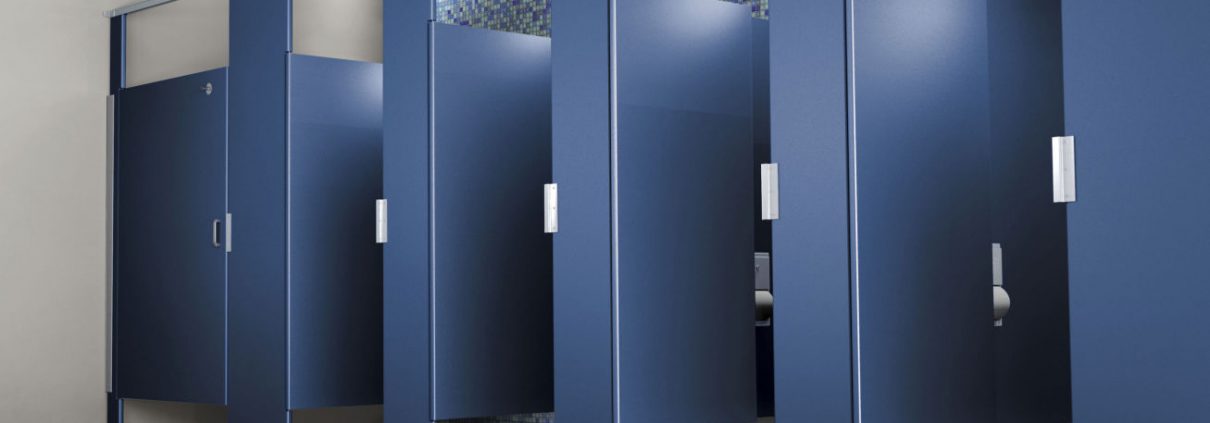9 Things to Consider Before Designing Your Commercial Bathroom
Commercial bathroom design involves a lot of moving parts, all of which need to be considered before implementation if your design is going to be worth building. The most important factors to consider before designing your commercial bathroom include the number of users, durability, water savings, and serviceability. You also need to consider initial and operational costs, Americans with Disabilities Act (ADA) standards, materials, and building codes.
Though it might seem like a lot of balls to juggle, making sure to discuss these nine components will help you ensure that your commercial bathroom design is a winner.
1. Number of Occupants
The number of people you expect to be using your commercial bathroom will greatly alter its final design. For example, a bathroom at a major sports complex will need to accommodate more occupants to avoid excessive queuing than a commercial bathroom located at a small family doctor’s office.
Understanding the expected amount of demand or use will help you to determine how large to make the restroom, how many commercial bathroom stalls or urinals to include, how many sinks or hand drying fixtures you’ll need, and so on.
2. Durability
There’s no doubt that building owners want the commercial bathrooms to be durable, but what level of durability is being required? For instance, a wooden bathroom vanity provides some durability. However, wood is highly susceptible to water damage from leaky pipes, scratches, graffiti, and other damage.
Meanwhile, materials such as high-density polyethylene (HDPE) provide exceptional durability. HDPE is resistant to dents, unlike metal, as well as scratches, mildew, graffiti, and more. HDPE also reduces environmental impact and offers improvements to the indoor air quality of the bathroom.
3. Water Savings
The choice of water-using fixtures is an important one because it will determine both initial and long-term costs for the facility. For example, the average toilet uses 1.6 gallons of water each time it’s flushed. A high-efficiency toilet, on the other hand, uses 1.28 gallons. If a toilet is flushed 10 times each day, the average unit would use 5,840 gallons a year while the high-efficiency unit only used 4,672.
A bathroom with three high-efficiency toilets could save roughly 3,504 gallons of water per year compared to a commercial bathroom with three standard toilets.
4. Serviceability
Should damage or a major plumbing problem arise, you’ll want to make sure that your restroom is easily serviced. That way a qualified repair team can quickly fix the problem and get your bathroom up and running again. This may be achieved by adding a service panel on the other side of the wall where workers can reach pipes or wiring.
5. Initial Costs
Understanding the initial costs of your project will help you to better determine how to design it. How much will it cost to purchase materials? Provide installation? Inspection fees? These initial costs will ultimately help to define the budget for your project, which could dictate your final design. For example, it may be more cost-effective to add more urinals and fewer toilets in the men’s room.
6. Operational Costs
After you take into account the initial costs of building the bathroom, you should consider the long-term operational costs. This can include the cost to provide lighting and electricity, water, and the cost for maintenance and repairs. One way to keep operational costs down is to use high-quality, durable materials for fixtures and vanities.
7. Americans with Disabilities Act (ADA) Accessibility
For your design to meet ADA guidelines, you need to have them in mind when developing your commercial bathroom. This can include many parts of the restroom, including the entrance. For example, a labyrinth-style entrance should have enough room for a wheelchair to pass through with room to spare on either side.
8. Economic Quality of Fixtures Used
Will your design use the good, better, or best materials available? Good materials are often low in price but may require frequent maintenance or provide a low level of durability. The best materials, on the other hand, typically provide a higher initial cost but require less attention in terms of maintenance and repairs. HDPE, for instance, is extremely durable and long lasting, making it a popular material for commercial restroom projects.
9. Local Codes
Before you start designing a commercial bathroom, you want to know what the local codes and regulations are. This will significantly impact what you can and can’t do in terms of design. Failure to consider the local building and occupancy codes could result in denied building applications and potential legal issues in the future.
Learn more about the many HDPE products available for your commercial bathroom design.



